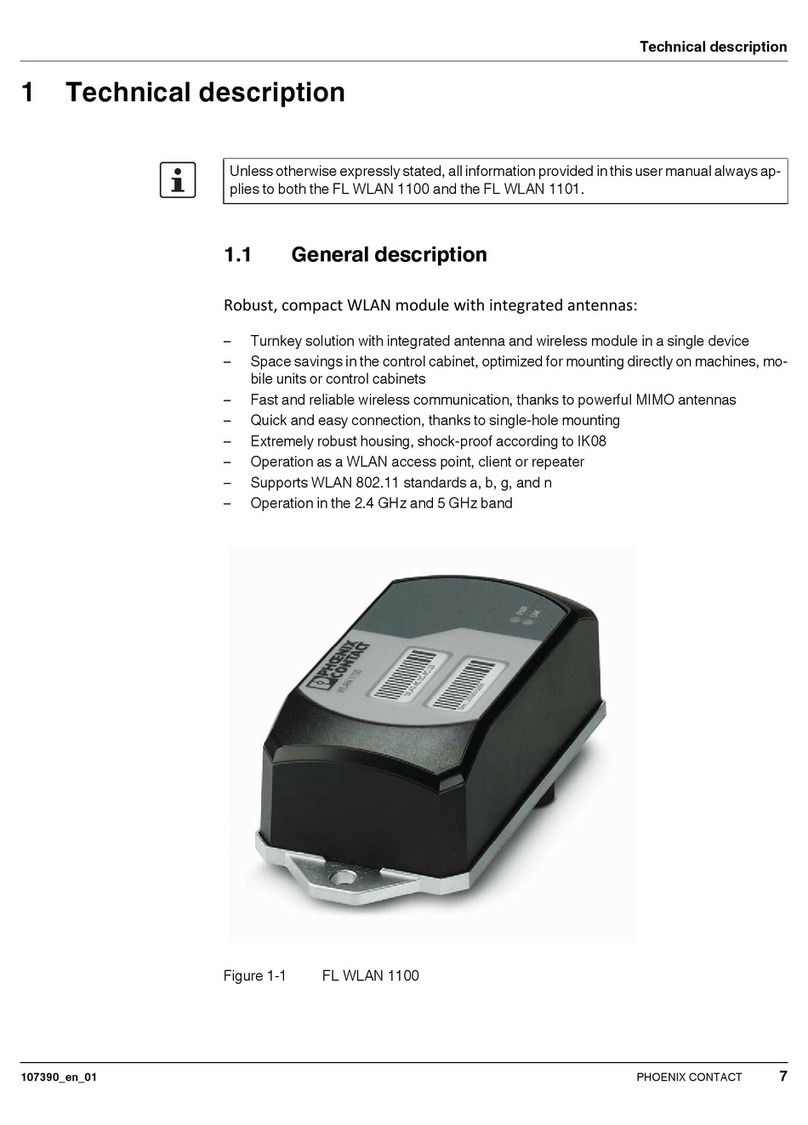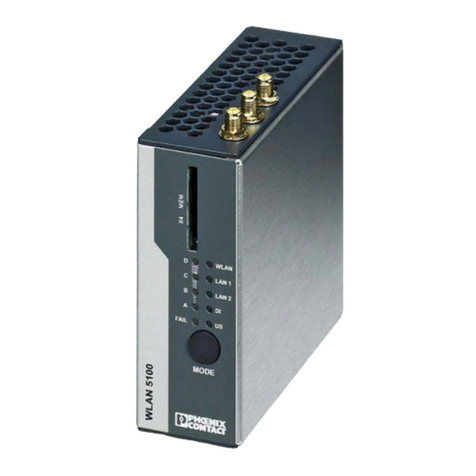
7191_en_08 PHOENIX CONTACT 5
Table of contents
1 Technical description .................................................................................................................8
1.1 General description ............................................................................................... 8
1.2 Country-specific registrations and standards......................................................... 9
1.2.1 FL WLAN 5100 ...................................................................................... 9
1.2.2 Information on setting the equipment for using gain antennas ............... 9
1.2.3 FL WLAN 5101 .................................................................................... 10
1.2.4 FL WLAN 5102 .................................................................................... 11
1.3 Firmware ............................................................................................................. 12
2 Mounting/antenna configuration ...............................................................................................13
2.1 Connections and operating elements .................................................................. 13
2.1.1 Electrical connection ............................................................................ 14
2.1.2 Mounting .............................................................................................. 14
2.1.3 Configuration of the antenna connections ............................................ 18
3 Startup and configuration .........................................................................................................21
3.1 Safety and installation instructions ...................................................................... 21
3.2 Installation notes.................................................................................................. 22
3.3 Status and diagnostics indicators ....................................................................... 24
3.3.1 Meaning of the LAN1/2 indicators ........................................................ 25
3.3.2 Meaning of the LEDs as signal quality indicators in client mode .......... 25
3.4 Configuration using the MODE button ................................................................. 25
3.4.1 General sequence ............................................................................... 25
3.4.2 Changing the firmware image using the MODE button ........................ 27
3.4.3 Connection to a PC .............................................................................. 28
3.4.4 Assigning the IP address via BootP (with IPAssign) ............................. 29
3.4.5 Assigning the IP address using IPAssign.exe ...................................... 29
3.4.6 Using the digital input and output ......................................................... 31
3.5 Startup via the web interface ............................................................................... 32
3.5.1 General information in the web interface .............................................. 32
3.6 Quick setup ......................................................................................................... 34
3.6.1 Operation as an access point ............................................................... 36
3.6.2 Operation as a client ............................................................................ 38
3.7 SD card for saving the device configuration ........................................................42
3.7.1 Inserting the SD card ........................................................................... 43
3.7.2 Saving the device configuration ........................................................... 44
3.8 Firmware Update ................................................................................................. 45
3.8.1 HTTP ................................................................................................... 45
3.8.2 TFTP .................................................................................................... 45
3.8.3 Via SD card .......................................................................................... 45





























